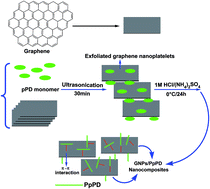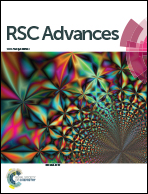Optimization of thermoelectric figure of merit in poly(p-phenylenediamine)/exfoliated graphene nanosheets composites
Abstract
In the present work, the conductive nanocomposite of poly(p-phenylenediamine)(PpPD)/exfoliated graphene nanoplatelets (GNPs) are synthesized via in situ polymerization under acidic conditions by doping different percentages of GNPs. The interactions between PpPD and GNPs are investigated by utilizing infrared spectra (FTIR), transmission electron microscopy (TEM), scanning electron microscopy (SEM), UV-visible, Raman spectra, thermogravimetric analysis (TGA) and X-ray diffraction (XRD). It is observed that the reticular strip-like PpPD are adsorbed on the surface of the GNPs, which can be fabricated by loading different percentages of GNPs. Thermoelectric properties (electrical conductivity, Seebeck coefficient and thermal conductivity) of pellets obtained by cold pressing are determined at room temperature. Compared with pure PpPD, it is observed that the presence of GNPs is an essential component for the improvement of the thermoelectric properties of the resulting nanocomposite, which reach the maximum of 193.245 S m−1 and 58 μV K−1, while the thermal conductivity of the composites relatively maintains low values even with high GNPs content, resulting in the increase in the dimensionless figure of merit (ZT). The highest ZT value of 3.63 × 10−4 has been obtained for the composite containing 50 wt% GNPs at 55 °C.


 Please wait while we load your content...
Please wait while we load your content...